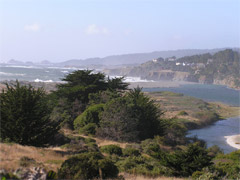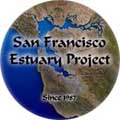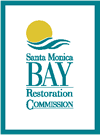Contact EPA Pacific Southwest Water Division
Pacific Southwest, Region 9
Serving: Arizona, California, Hawaii, Nevada, Pacific Islands, Tribal Nations
Oceans, Coasts, and Estuaries
Estuaries
| Oceans, Coasts, and Estuaries Quick Finder | ||
|---|---|---|
| OCE Home Dredging & Sediment Home | Coastal WatersCoral Reefs | Estuaries West Coast Estuaries Initiative |

National Links
What is an estuary?
An estuary is a partially enclosed coastal body of water where freshwater from the land measurably dilutes saltwater from the ocean. This mixture of water types creates a unique environment that is critical for the survival of many species of fish, birds, and other wildlife. They provide safe spawning grounds and nurseries for fish and shellfish, ideal resting and refueling places for migratory birds, and habitat for many reptiles, amphibians and mammals. Marshes and other wetlands, which often fringe estuaries, protect marine life and water quality by filtering sediment and pollution from upstream sources. Estuaries also create natural protection to coasts and shorelines from damaging storm waves and floods.
What is the National Estuary Program?
The National Estuary Program (NEP) was established in 1987 by amendments to the Clean Water Act to identify, restore and protect estuaries along the coasts of the United States. Currently, there are 28 estuaries in the program nation-wide. Unlike traditional regulatory approaches to environmental protection, the NEP targets a broad range of issues and engages local communities in the process. The program focuses not just on improving water quality in an estuary, but on maintaining the integrity of the whole system-- its chemical, physical, and biological properties, as well as its economic, recreational, and aesthetic values.
The Three National Estuary Programs in the Pacific Southwest are
 |
Morro Bay National Estuary Program |
 |
San Francisco Estuary Project |
 |
Santa Monica Bay Restoration Project |
West Coast Estuaries Initiative
The West Coast Estuaries Initiative for the California Coast (WCEI-CA) is a focused effort under the Targeted Watershed Grant Program to advance successful partnerships that conserve, restore and protect the water quality, habitat and environment of California coastal waters, estuaries, bays and near shore waters. Congress appropriated funds for this competitive grant program in 2007 ($2.5m) and 2008 ($5m) to be administered by U.S. EPA Region 9. Funds were not allocated to this Program in the FY 2009 Budget.
For more information, please visit the WCEI-CA page.
West Coast Governors' Agreement on Ocean Health
On September 18, 2006 the Governors of California, Oregon and Washington announced the West Coast Governors' Agreement on Ocean Health (PDF) (8 pp, 216K, About PDF)![]() . The Agreement launched a new, proactive regional collaboration to protect and manage the ocean and coastal resources along the entire West Coast, as called for in the recommendations of the U.S. Commission on Ocean Policy and the Pew Oceans Commission.
. The Agreement launched a new, proactive regional collaboration to protect and manage the ocean and coastal resources along the entire West Coast, as called for in the recommendations of the U.S. Commission on Ocean Policy and the Pew Oceans Commission.
The Agreement seeks to advance the goals of:
- Clean coastal waters and beaches
- Healthy ocean and coastal habitats
- Effective ecosystem-based management
- Reduced impacts of offshore development
- Increased ocean awareness and literacy among the region's citizens
- Expanded ocean and coastal scientific information, research, and monitoring
- Sustainable economic development of coastal communities
The Agreement also underscores the importance of managing activities that affect our oceans on an ecosystem basis. That is, managing human activities and their impact on ocean resources in a way that accounts for the relationships among all ecosystem components, including people and other species and the environment in which we all live.
EPA supported the development of the Agreement and continues to support its implementation, particularly the Polluted Runoff Action Coordination Team and their effort to reduce impact on near-shore waters. For more information, please visit the West Coast Governors Alliance on Ocean Health website ![]() .
.
Contact Information
Sam Ziegler (ziegler.sam@epa.gov)
Phone: 415-972-3399
